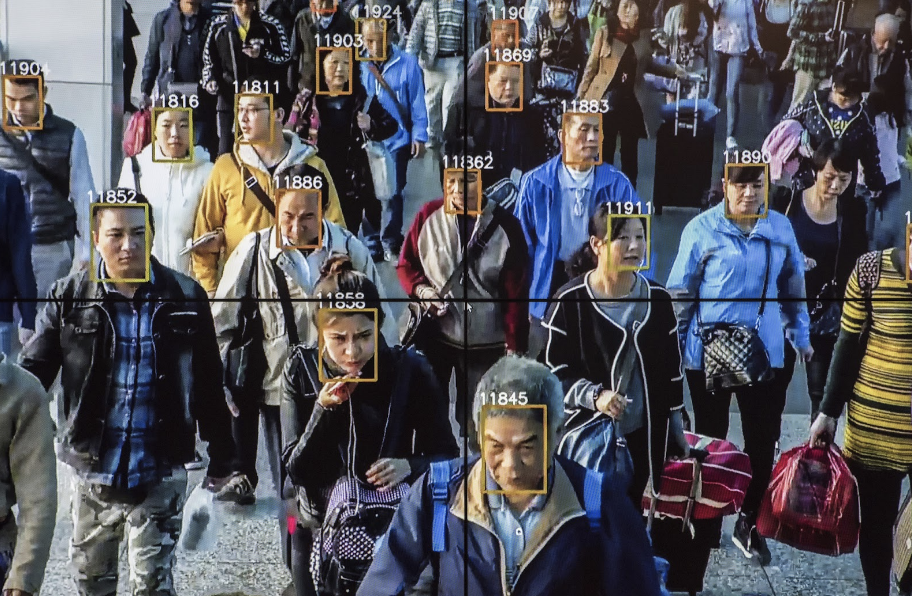China Uses Sophisticated Surveillance Technology to Track Down and Intimidate Protestors
Protestors hold pieces of white paper to protest China’s ‘Zero Covid’ policies in Shanghai on 27th Nov, 2022 | Photo courtesy of Kyodo.
China’s pervasive technological surveillance system implicated numerous people present at last week’s widespread protests against Zero Covid policies. Methods of tracking protestors include facial recognition technology and tapping into and collecting data from iPhones present at protests. Protesters located by technological means received phone calls and visits from Chinese authorities, threatening them to stay away from any further protests. Many citizens experienced the surveillance system’s direct effects for the first time.
Smaller regional protests against China’s draconian Zero Covid policies spread throughout China in the past year. The deaths of ten people in a residential building fire in Urumqi sparked the latest wave of protests, with public dissent spreading throughout China’s major cities. Several protesters called for President Xi Jinping and the Communist Party to relinquish power, while the majority criticized the current government’s policies, making this wave of protests the largest and most critical of the government in decades.
The government practiced a typical two-pronged approach to quell protests, cracking down on protestors first and making some policy concessions later. Police worked to get protestors off the streets, and the media increased censorship and cracked down on information dissemination. The government then revealed plans to gradually ease COVID restrictions, with authorities in Guangzhou already relaxing testing and lockdown policies.
Protesters who avoided arrest on the streets did not avoid authorities entirely. The sophisticated modern technology comprising China’s surveillance system implicated many as soon as they arrived to protest.
One method authorities used to track protestors down was facial recognition data from China’s surveillance cameras. Analysts believe China uses over half of the world’s total surveillance cameras, which film citizens in most public spaces. Analytical software determines details of people photographed and stores them in a database that holds 2.5 billion facial images at any time.
Protesters wary of the surveillance cameras wore hats, sunglasses, and masks to avoid facial recognition. However, China’s facial recognition technology can now get around masks and sunglasses. People who disguised themselves still received intimidating calls or visits from police, which transparently told them exactly how they tracked them down.
CCTV model shows facial recognition software at work. Photo by Gilles Sabrié | Washington Post
Protesters who evaded facial recognition technology did not evade China’s phone trackers, tiny boxes with antennas connecting to and recording data from any device in range. These prove easier to miss than surveillance cameras, yet still, some protesters took proactive steps to outsmart them. These include disabling FaceID and GPS features, powering off their phones, or not bringing a phone with a number connected to any state systems. Those who disabled certain features on their phones at protests still received phone calls or even visits from police, often without providing addresses.
Having virtual private networks (VPNs) or foreign apps like Telegram and Twitter downloaded also implicated protestors. Police at protests have asked to check protesters' phones for these apps. On a Shanghai subway train, police also checked people’s phones for these apps at random. People deleted the apps or shied away from using VPNs after these run-ins, as police threatened that the government would closely monitor people who use them.
The phone calls and police visits effectively intimidated several protesters. Police typically made protesters pledge not to attend future protests. Some asked protesters to come to the station and assist the state with investigations concerning the protests. The threat of further repercussions like detainment and the shock at the sheer power and pervasiveness of the surveillance system scared people into not gathering again. Still, other protesters remained unperturbed, saying they knew the dangers and expected police to find them.
It appears the surveillance system China constructed in the past decade fulfilled its role and promise in response to last week’s protests, proving to many Chinese citizens that the government is not exaggerating the power of its surveillance capabilities.


